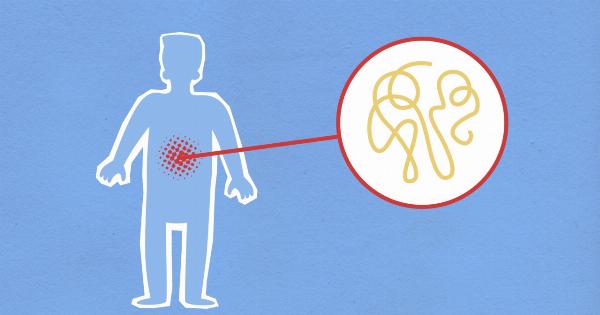Ovarian cysts are sacs filled with fluids that form on the ovaries. They are common among women of childbearing age and can be benign or malignant. Ovarian cysts can cause discomfort or pain in the pelvis and, in some cases, lead to complications.
In this article, we will explore the symptoms of ovarian cysts and share images that can help you better understand this condition.
What are Ovarian Cysts?
Ovarian cysts are small sacs filled with liquid that can form on the ovaries. They are common among women of childbearing age, but they can also occur after menopause.
While most ovarian cysts are benign and don’t cause any symptoms, some can become cancerous.
Ovarian cysts are typically detected during routine pelvic exams or through ultrasound scans.
Depending on their size and what they are filled with, ovarian cysts can cause symptoms like bloating, painful bowel movements, painful intercourse, and irregular periods. In rare cases, they can cause complications like ovarian torsion or rupture.
Types of Ovarian Cysts
There are several types of ovarian cysts, including:.
Follicular Cysts
Follicular cysts are the most common type of ovarian cysts. They form when the sac that contains an egg fails to release the egg, causing the follicle to grow into a cyst.
These cysts usually disappear on their own within a few weeks and rarely cause any symptoms.
Corpus Luteum Cysts
Corpus luteum cysts form after an egg has been released and the follicle seals off. These cysts usually disappear within a few weeks, but they can cause pain or bleeding if they rupture.
Dermoid Cysts
Dermoid cysts are a type of ovarian cyst that contains tissue from other parts of the body, such as skin, teeth, and hair. They are usually benign, but they can grow quite large and cause discomfort or pain in the abdomen.
In rare cases, they can become cancerous.
Endometriomas
Endometriomas are cysts that form as a result of endometriosis, a condition where tissue similar to the lining of the uterus grows outside of the uterus. These cysts can cause pain, especially during menstrual periods, and can interfere with fertility.
Cystadenomas
Cystadenomas are cysts that form from ovarian tissue and can grow quite large. They are usually benign, but some can become cancerous. These cysts can cause symptoms like abdominal pain, bloating, and urinary urgency.
Symptoms of Ovarian Cysts
Most ovarian cysts don’t cause any symptoms, and women may not even know that they have one. However, if a cyst grows large or causes complications, it can cause symptoms like:.
- Pelvic pain or pressure
- Bloating or swelling in the abdomen
- Painful bowel movements
- Painful intercourse
- Irregular periods
- Difficulty getting pregnant
- Painful periods
- Abnormal vaginal bleeding
Diagnosing Ovarian Cysts
Ovarian cysts can be detected during a routine pelvic exam or through an ultrasound. Your doctor may also order blood tests to check for increased levels of certain hormones that can indicate the presence of an ovarian cyst.
In some cases, your doctor may order a CT scan or an MRI to get a better look at the cyst.
Treating Ovarian Cysts
Treatment for ovarian cysts will depend on the size of the cyst, whether it is causing symptoms, and whether it is cancerous. Small, benign cysts that don’t cause any symptoms may not need treatment.
Your doctor may recommend monitoring the cyst with regular ultrasounds or blood tests.
If the cyst is causing symptoms, your doctor may recommend hormonal therapy to regulate your menstrual cycle and reduce the size of the cyst. In some cases, surgery may be necessary to remove the cyst.
If the cyst is cancerous, your doctor may recommend surgery to remove the cyst and any affected tissue.
Images of Ovarian Cysts
Below are images of ovarian cysts that can help you better understand what they look like:.
Follicular Cyst
:max_bytes(150000):strip_icc()/Follicular-56a0e57b5f9b58eba4b1bd37.jpg) .
.
Corpus Luteum Cyst
:max_bytes(150000):strip_icc()/CorpusLuteum-56a0e4295f9b58eba4b1a28f.jpg) .
.
Dermoid Cyst
:max_bytes(150000):strip_icc()/DermoidCyst-57ffe57b5f9b5805c2a4e0d6.jpg) .
.
Endometrioma
:max_bytes(150000):strip_icc()/Endometrioma-56a0e5365f9b58eba4b1c0cf.jpg) .
.
Cystadenoma
:max_bytes(150000):strip_icc()/Cystadenoma-56a0e4815f9b58eba4b1b4f0.jpg) .
.
























